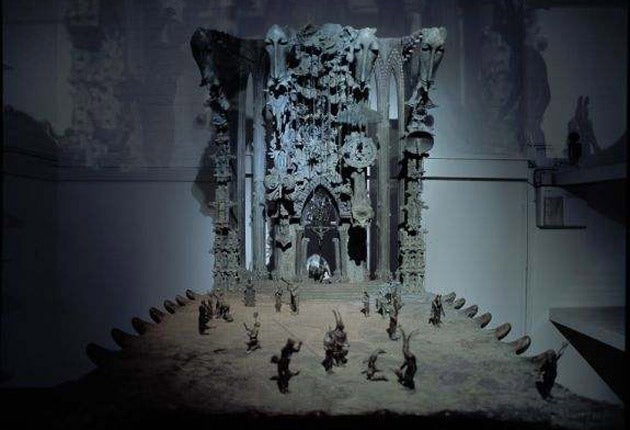The Threadneedle Prize, Mall Galleries, London
A shot in the arm for a fusty gallery

Your support helps us to tell the story
From reproductive rights to climate change to Big Tech, The Independent is on the ground when the story is developing. Whether it's investigating the financials of Elon Musk's pro-Trump PAC or producing our latest documentary, 'The A Word', which shines a light on the American women fighting for reproductive rights, we know how important it is to parse out the facts from the messaging.
At such a critical moment in US history, we need reporters on the ground. Your donation allows us to keep sending journalists to speak to both sides of the story.
The Independent is trusted by Americans across the entire political spectrum. And unlike many other quality news outlets, we choose not to lock Americans out of our reporting and analysis with paywalls. We believe quality journalism should be available to everyone, paid for by those who can afford it.
Your support makes all the difference.I absolutely dread going to review exhibitions at the Mall Galleries for two quite distinct reasons: the spaces there, which consist of one large, rather gawkily unattractive open-plan gallery, and several smaller ones, are generally hung as if everybody in the world has been encouraged to try and get a look in. Paintings are stacked up the walls in Pitti Palace style, one upon another. In short, it is an unbelievably unattractive clutter, a mess. But that is not a sufficient reason for feeling quite as depressed as I usually feel when I walk in the door. No, it is also something to do with my assumption about the kinds of works that I will see on the walls of this place. I associate this gallery with a particularly dreary and backward-looking view of the importance of figurative art. A tame art, of academic refinement, and rather narrow social compass, which has quite deliberately set its face against modernity and all that modernity represents.
But today things look a little different. Today it is the turn of the Threadneedle Prize, an annual, open-submission competition which is now into its second year. To my amazement, I see that there are far fewer works on the walls, and that there is therefore some breathing space in which to feel and to think something about one work after another. In today's show – which consists predominantly of paintings, though there are some sculptures too – fewer than 100 works are on display, selected from a shortlist of more than 2,000 by a good team of judges. But this exhibition also feels more various than usual, more pleasingly venturesome, more open to conversations with the rest of the art of the last 150 years. We don't feel as if we are standing in Prince Charles' last dusty redoubt, fingering our blunderbusses, simpering alongside a brave few like-minded fogeys.
There are paintings here which make an unpredictable splash. Look, for example, at the two gutsy, offbeat and slightly crudely fashioned works by 74- year-old Rosie Wylie, for example. They have a kind of bold, cartooning quality about them that we often associate with the late works of Philip Guston. Near to Wylie's The Manufacturers, there is a very strange painting by Sara Rossberg called Accumulation, which shows a ghostly group of figures clustered together beside a river. There is something fascinating about the way this has been painted, all these slightly globby encrustations of paint, which has helped to produce an otherworldly ethereal sheen. It's a little reminiscent of Burne-Jones. All over this show you come across works which are using figuration as a point of departure, and then taking a serendipitous walk to a slightly different place, or which have taken a subject, and treated it in a way which is oddly appealing and thought-provoking. Look at Beatrice Haines' Corner Shop Customers, for example, a series of 20 beguiling portraits, displayed as a single panel, and all drawn on the kinds of paper bags that any shopkeeper would once have filled up with gobstoppers and licorice allsorts.
And then there is a room entirely devoted to a work by Tim Shaw called Middle World. It is the public which gets to decide who wins this prize – worth £25,000 – by voting online, or by voting at the gallery itself. My vote went to Tim Shaw. Imagine something akin to a gothic structure, the blasted fragmentary nave end of some monstrous cathedral, with a piazza in front of it, where strange, tiny figures play and stand around – one lies on his back, balancing a skull on the end of a stick. I marvelled at this work's imaginative verve, and the delightful intricacy of its making. Have a look for yourself.
Until 19 September (020-7930 6844)
Join our commenting forum
Join thought-provoking conversations, follow other Independent readers and see their replies
Comments